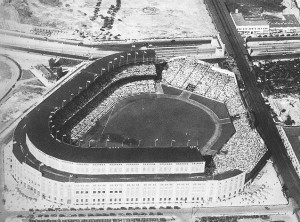Sports Demographics in a Broader Context
The results discovered about Thompson Arena’s demographics may be extrapolated to a broader context. There are numerous articles in sports literature that demonstrate racial, gender, socioeconomic and cultural biases within sports fan bases. Although diversity statistics in professional sport stadiums are limited, general observation in North American arenas yields a higher percentage of white and rich fans than the general population. These results are strikingly similar to Thompson Arena’s demographic percentages. Not only so, the evolution of sports arenas similarly prove the lack of inclusive diversity in sports.
Design’s Evolution in Sporting Arenas
Sporting arenas have long served as a space for which mass groups of people with similar interests congregate to celebrate and cheer on their team. The arena’s spatial design and function has evolved to become bigger and better, with an aim to include as many fans as possible. This video documents some of the biggest stadiums in the world, which house an increasingly large number of fans.
In the past, however, certain stadiums were created to be exclusive. A prime example is the Hillsborough Stadium in Sheffield, England. The stadium was designed to include traditional seating areas and numerous terraces, spaces that served as a standing area for spectators. These terraces were a cheaper alternative to sitting in the stands and were usually purchased only by the working class fans.

Fans were housed in terrace pens and separated from the arena by high steel fences. (Photo: http://www.bbc.com)
Thus, due to their exclusivity, terraces have often encouraged crowd disorder and fan segregation. Since then, stadiums and arenas have been constructed intentionally to be more inclusive, primarily by expansion of seating through tiers. In 1923, Yankee Stadium, the first three-tiered stadium, was unleashed to the public and its all-seating design housed fans of all socio-economic classes without the unruliness of terrace designs.
However, similar to Thompson Arena’s case study, an important issue arises with the evolution of stadium structures. Socioeconomic boundaries are in fact not erased by new stadium structures, but are just obscured by the new designs. The fact that sports are still predominantly white-dominated despite diversification goes to show that we still have much to improve on if we value both diversity and inclusivity in our society.
